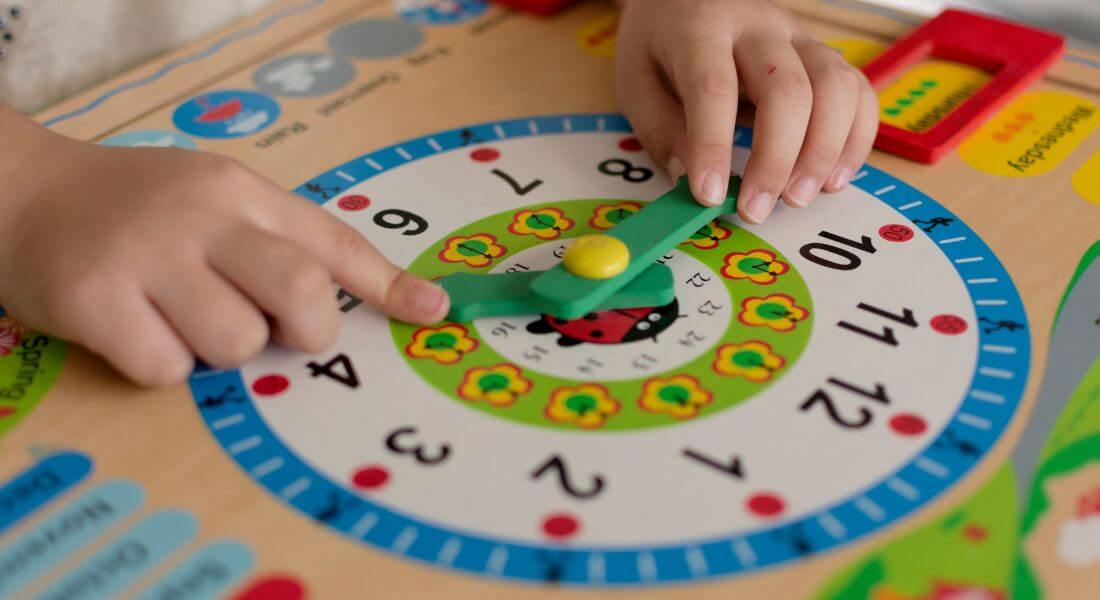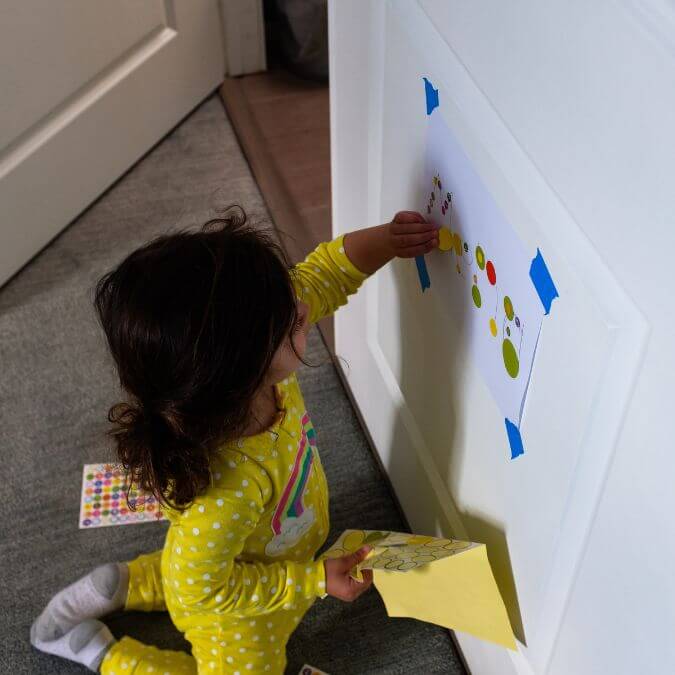Spring Forward: How to Prepare Kids for the Time Change
March 03, 2025
March 03, 2025

Losing an hour of sleep is no fun for anyone, but for families with young kids, time changes can be extra tricky. Daylight Savings Time begins mid-March each year. On top of toddlers and young kids still developing routine sleep patterns, children with autism may be especially affected by the change in routine and therefore may be unable to self-regulate.
Kids’ brains may have them questioning, “Why do I have to sleep when it’s still light out?” and “Why can’t I play outside longer?” The change to longer days of spring and summer can be confusing and affect more than their sleep; impacting emotions, appetite and behavior.
If you’re feeling uneasy about the time change, we want to help get your family prepared. Our Hopebridge team put together a quick list of tips to make mornings (and evenings, too!) a little easier as we prepare to spring forward on Sunday. These are especially helpful for children on the spectrum, but are also beneficial for neurotypical kids.
Chat about the time change in advance.
This is pretty much the first step for all of our “tip sheets,” but with good reason. Discussing what’s going to happen with your children limits surprises and better prepares them. Tell them you are setting the clock forward and as a result, it will be darker earlier in the morning when they wake. Inform them it will also stay lighter at night, maybe even when it’s time for bed. It’s best if you can pinpoint what they might regularly be doing at these times. Make sure to inform them when they might first notice these changes. Also tell them what you’d like them to do in these cases, such as continue to stay in bed and rest even though the sun is coming up. You can also ask your child’s therapist to assist in this process.

Maintaining regular chores and schedules is helpful in making the time change transition smooth
Keep kids busy.
We can help with this one during the week if your kid attends Hopebridge, but keep your child active on the weekend. Research shows exercise can help individuals adjust to new sleep schedules.
Keep the bedtime routine consistent.
With the change in time, your child may be tired at what seems like earlier or later. As a result, it is easy to rush through the bedtime routine or start it earlier or later. Instead, we urge you to keep the schedule consistent in order to maintain the structure and provide security.
Make small changes in bedtimes (and wake-up times) before the “big day.”
Focus on small updates. Depending on when you start, shift bedtime and wake-up time by 5- to 15-minute increments, resulting in the full hour difference by Sunday. You can also spread out the adjustments even after Sunday if you’re a bit late to the game; just change the times accordingly. This makes the sleep-related time change much less noticeable on the body.
Consider a special clock.
In general, kids may not understand how to tell time or know the right hour to start their days. Some children with autism may even wake in the middle of the night ready to play, but visual aids can help. Special clocks like the OK to Wake Clock and Hatch have a soft nightlight that turns green when it’s time to wake up, which helps set boundaries. While it’s probably not a good idea to begin a new routine of using this clock on the same night as the time change, if you have time, consider working it into your normal routine in an effort to ease the transition when the time is right.
Know it may take children with autism a bit longer to adjust.
Unfortunately, you can try all of these tips, and in the end, it could still take days, weeks, or – dare we say – months for children to adjust. Many of our kids live by their routines and habits, so an alteration could cause some anxiety. This will take patience, so give it time to mold.
Do you need more support in this area or with other behaviors your child experiences (or doesn’t)? Our team of Hopebridge clinicians is here to serve as an extension of your family and give you – and your child – the tools needed for them to live more independently. Fill out the simple form on our “contact us” page and our team will work to get your child in for a autism testing, an ABA therapy evaluation, or other outpatient services like speech-language therapy and occupational therapy, with as little wait time as possible.